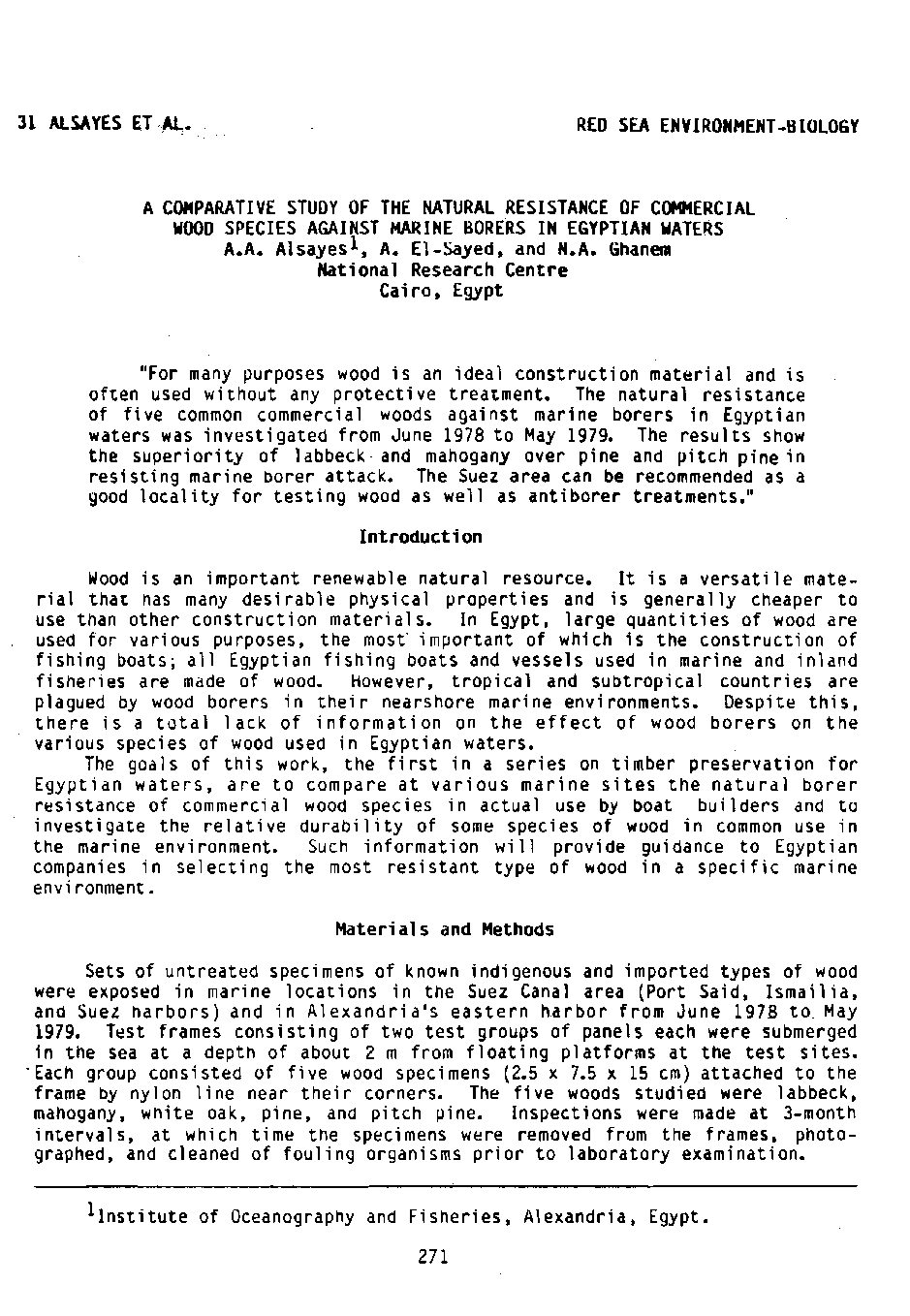Categories
vol-9ALTE~NATE STATES Of POPULATIONS Of ECHINOMETRA MATBAEI (DE BLAINVIllE)
(ECHINODERMATA: ECHINOIDEA) IN THE GUlf Of SUEZ AND THE GULF OF AQABA
John M. lawrence
University of South florida
Tampa, F10l”flta, USA
“Indi vidual s of Echinometra mathaei from the Gulf of Suez are
larger, have more annual rings in the plates of their tests, and more
plates between the apical system ”’&n’d” the ambitus than” individuals
from the Gulf of Aqaba. These populations exist in alternate states
similar to those of E. mathaei at Reunion Island, South Pacific
Ocean. The basi s for the alternate states of E. mathaei on the two
sides of the Sinai peninsula may also be the basis for the difference
in distribution of echinoid species in the Gulf of Suez and the Gulf
of Aqaba. These alternate states may be stable.”
Introduction
Lewontin (1969) proposed that there are multiple stable points possible
for a community; that is, stable communities with different structures can
exist. Sutherland (l~14) stated that the identification of multiple stable
points depended on attributing some degree of stability to them. His examples
of alternate stable-state communities involved the additianor subtraction of
an important consumer, whi ch changed the structure of the community.
Contrasting states ,of the shallow-water algal communities involving the
echinoid genus Strongylocentrotus have been found off the northern Cal i fornia
coast (Lowry and Pearse, 1973), the Aleutian Islands (Estes and Palmisano,
1974; Esteset al., 1978; Simenstad et al., 1978), and the eastern Canadian
coast (Breen and Mann, 1976; Chapman, 1981; Mann, 1977). In all of these
cases, the basis for the alternate states of the community presumably is in the
role of a predator– the sea otter Enhydra lutris in the northeastern Pacific
and the lobster Homarus americanus off the eastern Canadian coast– functioning
in the role of a keystone species as concei..ved by Paine (1969). The presumption is that these altered states are stable.
The observations clearly indicate that the populations and individuals of
the echinoids in the alternate states of the community are themselves in alternate states. Indeed, this is one of the means of recognizing alternate stablestate communities. The dual purpose of this paper, is to describe populations
of the echinoid Echinometra mathaei (de Blainvllre) in what seem to be a’lter-‘
nate states in the Gulf of Suez and the 6ulf of Aqaba and to evaluate the bases
for alternate states in echinoderms.






